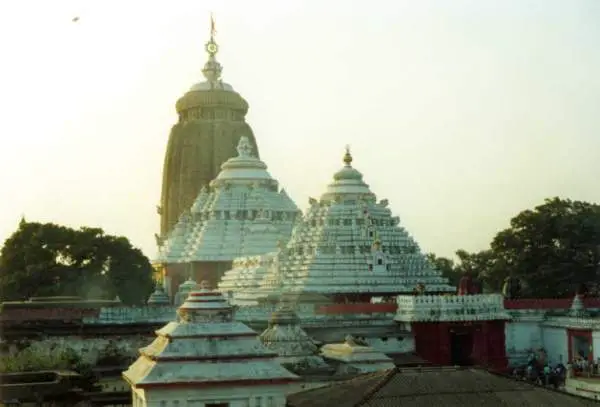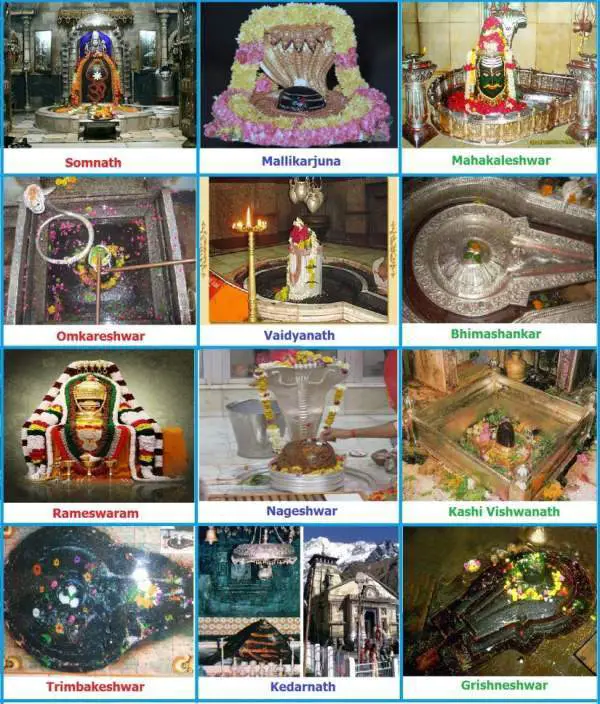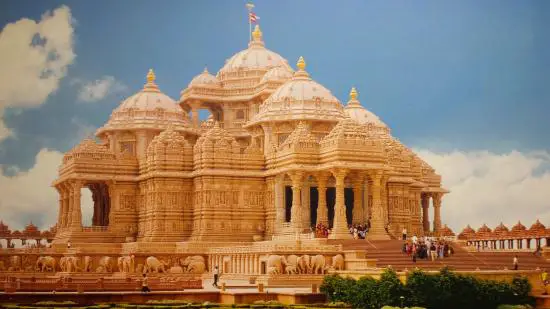Boasting on the virtue of ‘Shakti,’ Sri Chamundeshwari Temple is one of the oldest hill temples in the prominent city of Mysore, presently Mysuru that is dedicated to the goddess ‘Chamundi,’ one of the avatars of ‘Durga’.
This ancient temple is one of the oldest and most sacred emblems of the rich cultural heritage of Mysore that attracts spiritual-seekers and history enthusiasts. Its architectural beauty and religious significance blend popularized it in Karnataka and across the subcontinent.

Table of Contents
Location & Timings
The Sri Chamundeshwari Temple is located at a distance of 13km from the palace city of Mysore in Karnataka. Surrounded by natural beauty, the temple is located in the midst of the forest hills with brilliant flora and fauna. While traveling to the temple, a picturesque bird’s eye view of Mysore can be spotted. One can reach the temple through the KSRTC bus facilities, which are available every 20 minutes from the Mysore city bus stand.
Darshan Timings – 7:30 AM to 2 PM and 3:30 PM to 6 PM
Abhisheka Timings – 6 AM to 7:30 AM and 6 PM to 7:30 PM
On Fridays – 5 AM to 6:30 AM
Visitations on Tuesdays, Fridays, 2nd and 4th Saturdays, Sundays, and Government Holidays for devotees, the general public, and esteemed guests are requested between 2:30 PM and 5:30 PM for a smoother experience.
Sri Chamundeshwari Temple History
The Sri Chamundeshwari Temple occupies an eminent position in the history of Karnataka and Hindu religion with great antiquity and a history of over 1000 years.
A fierce form of ‘Shakti’, the temple is built for the goddess ‘Chamundi’, one of the avatars of Durga or Parvati. The name is derived from the Sanskrit words ‘Chanda’ and ‘Munda’, translating to the slayer of the buffalo-headed demon Mahisasura. A large number of devotees from all over the country pour in large numbers to fulfill their desires and aspirations with the blessings of Goddess Chamundi.

The revered idol of this temple is celebrated for saving the gods from the buffalo-headed demon Mahishasura. Incarnating as Chamundi, with multiple limbs armed with the weapons and powers of gods, she fought Mahishasura and his army for nine continuous days, ultimately killing him at the top of Chamundi Hill. She resided at the top of the hills in this exquisite temple to safeguard the people.
In 1573, when Chamaraja Wadiyar was offering his prayers, he was struck by lightning and almost burnt his hair. Despite this, he survived, and historians often credit it to the blessings of the Goddess Chamundi and the powers of this temple.
This holy place is significant in the Hindu religion for being built at the site where Sati’s hair fell. As history goes, following Shiva’s Tandav dance, when Vishnu intervened, the body parts of Sati fell in numerous places, and wherever the body parts fell, the places became holy shrines. The Sri Chamundeshwari Temple is recognized as one of the 18 Shakti Peethas in India. Derived from the ancient Puranic region of Krouncha, where this temple lies, it is regarded as the Krouncha Peetha.
Its festivities like Ashada Shukravara (auspicious Fridays in the month of Ashada), Navratri and Ammanavara Vardhanti (celebration of the Utsava Murthy on Revathi Nakshatra day) draws in a large number of visitors and devotees. Amongst all these celebrations, Chamundi Jayanti is the most popular occasion celebrated alongside Ammanavara Vardhanti to commemorate the anniversary of the Utsava Murti of the Chamundi Devi by the Maharaja of Mysore.
Mysuru Dasara, the state festival of Karnataka, is celebrated with pomp and grandeur at the Sri Chamundeswari Temple by decorating the idol in 9 different ways, a symbol of Navadurgas with jewel donations by the Maharajas.
Krishnaraja Wodeyara, a devotee of this Goddess, presented to this temple the Simha-vahana, a lion shaped vehicle, along with animal cars and valuable jewels that are presently used in religious occasions.
Temple Design and Architecture
The Hoysala Dynasty is credited for building the original shrine of this exquisite temple in the 12th century, while its brilliant tower was built in the 17th century by the Vijayanagara Kingdom and Wodeyar rulers. A staircase of 1000 steps was crafted in 1659 to lead up to the temple located on the 3000-foot summit.
The quadrangular structure of the temple is built in Dravidian style. It consists of a main doorway entrance, the Navaranga hall, Antarala Mantapa, Sanctum Sanctorum and Prakara that give it its distinct style. A seven-story tall gopuram or tower was built in 1827 with intricate carvings at the entrance with a small tower, or Vimana atop the sanctum sanctorum. Seven golden kalashas stand out atop the Shikara in front of the entrance. As one steps in through the silver-plated doorways, they are greeted by images of Dwarapalakas, the doorkeepers.
This temple is an abode for the gods and goddesses. On the right side, a small statue of Lord Ganesha, a symbol of the remover of obstacles, welcomes the devotees. Further inside, the flagstaff, footprints of the Goddess, and a small statue of Nandi face the sanctum sanctorum. One can spot an image of Lord Hanuman near the holy shrine.
The temple depicts magnificent images of Nandi, the bull mount of Lord Shiva. In particular, the huge granite Nandi on the 700th step of the Chamundeshwari Hill is one of the most prolific sculptures of this temple. It is over 15 feet high and 24 feet long and decorated with bells around its neck. The idol of Chamundeshwari, built of solid gold, is called the Goddess of Mysore, the tutelary deity of Mysore Maharajas.

Best Time to Visit
The best time to visit the Sri Chamundeshwari Temple is between October to March. During this time the weather is pleasantly cool and conducive for exploration. This period is suitable for climbing up the stairs to the top of the temple, which is believed to rid one of their past sins. It also coincides with the grand celebrations of Mysuru Dasara, a significant festivity that marks the spread of good over evil. Devotees witness the marvel of the palace with majestic processions and cultural performances.
The palace and temple are illuminated and remain a spectacular scene to witness.
Tourists can also visit the Jwala Malini Sri Tripura Sundari Temple at the foot of Chamundi Hills, Utthanahalli, which celebrates the sister of Chamundeshwari, is believed to have helped her slay the demon Raktabija on the battlefield. The Lalith Palace, Mahabaladri, and Narayanaswamy temples, along with Mahisasura and Nandi’s statues, are a must-see, along with the temple.
We hope you liked this article on Sri Chamundeshwari Temple. Please don’t forget to share this article with your friends and family on social media.




